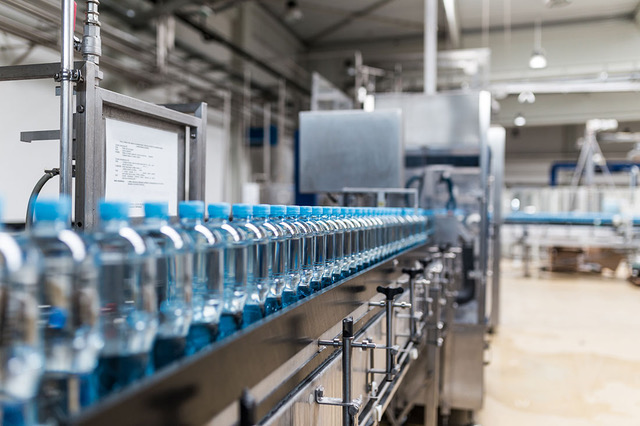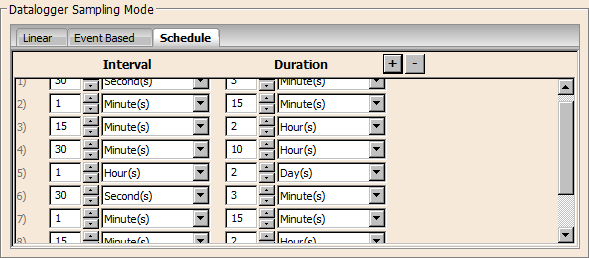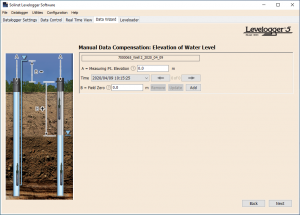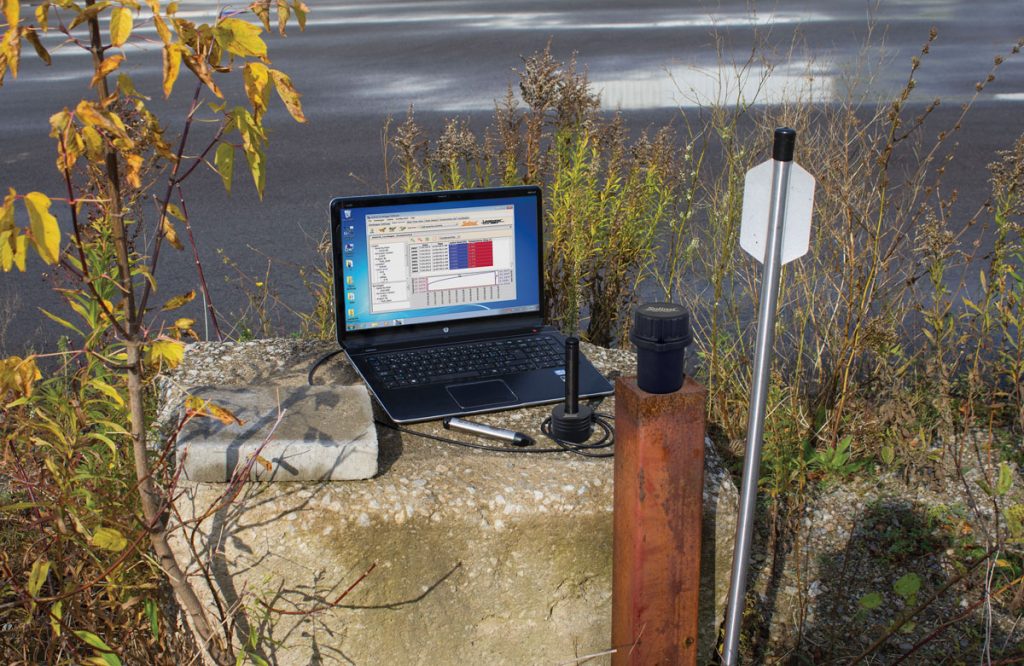
Water-taking activites in Ontario, including water bottling, are subject to strict permit to take water requirements.
Water-taking permits in Ontario are a hot topic of late. There was outcry when a large water bottling company outbid a small community for its own drinking water well! This prompted the Ontario government to commit to reviewing their permit renewal processes and fees.
But it’s not just large water-takers who are subject to water use permitting. In Ontario, anyone taking more than 50,000 litres of water a day, from a surface water or groundwater source, must apply for a Permit to Take Water.
This includes water supply systems, fruit and vegetable growers, manufacturing and processing facilities, construction and dewatering operations, and recreational facilities such as golf courses. (There are exemptions, such as firefighting, emergency, and livestock needs).
The Ministry of the Environment and Climate Change (MOECC) directs the Permit to Take Water program in Ontario. They oversee the application and approval process, as well as enforce permits and reporting requirements. You can find more information about the program here: https://www.ontario.ca/page/permits-take-water
Other Canadian Provinces and Territories have similar programs for licensing and approving water takings, and include their own application and reporting obligations. And it’s not just in Canada that these types of programs are in place or being implemented!
Permit to Take Water Application
When applying for a Permit to Take Water in Ontario, depending on the nature of the water taking, a hydrogeological study may be prerequisite as part of the application process. A Qualified Person (QP) must perform the study (e.g. professional geoscientist, hydrogeologist).
In cases where a groundwater well is the source of water extraction, a pumping test is a standard component of the study. A test for each pumping well is to be performed, especially if more than one well will be used simultaneously.
Note: the MOECC provides a guidance document for QPs performing the study and pumping tests. It can be found here: https://www.ontario.ca/page/technical-guidance-document-hydrogeological-studies-support-category-3-applications
Water level measurements are a fundamental part of pumping tests. It is recommended that due to the frequency and need for continuous measurements during a test, a pressure transducer and datalogger are used over manual water level measurement methods.
Solinst LevelVent and Levelogger water level dataloggers are great tools for use in pumping tests. These instruments combine a pressure transducer (and temperature sensor) and datalogger in one compact device, which are easy to deploy in wells.

Solinst Levelogger 5 and LevelVent 5 Water Level Dataloggers
(You can read a previous blog post, which describes the differences between these two datalogger types, here: https://www.solinst.com/onthelevel-news/water-level-monitoring/water-level-datalogging/absolute-vs-vented/)
Solinst water level dataloggers are very straightforward to program and start using Solinst Levelogger Software. They have the advantage of offering a customized sampling schedule to match the logarithmic time cycle recommended in guidelines.

Example of customized sampling schedule set in Solinst Levelogger Software.
Dataloggers are scheduled to record water levels before, during, and after the pumping test (baseline, pumping, and aquifer recovery). Solinst dataloggers can be set to record at intervals as small as 1/8 of a second, providing higher resolution data where needed.

The Manual Data Adjustment option in Levelogger Software allows you to adjust your data to meet your requirements.
When performing pumping tests in more than one well, it is advisable to reference each well to the same surveyed datum (e.g. sea level) to normalize all water levels across the study area. Using Levelogger Software, LevelVent and Levelogger data can be adjusted to this fixed benchmark using the “Manual Data Adjustment Option” in the Levelogger Software Data Wizard.
Read our Technical Bulletin to find out more about selecting the proper Solinst equipment for use in a pumping test, and the advantages water level dataloggers provide to QPs: https://www.solinst.com/products/dataloggers-and-telemetry/3001-levelogger-series/technical-bulletins/simplify-your-pumping-test.php
During pumping tests it is recommended to record water level fluctuations in an observation well, and any neighbouring wells. The frequency of these measurements is usually much lower, therefore; a portable Water Level Meter such as the Solinst Model 101D Water Level DrawDown Meter, Model 101 Water Level Meter or 102 Water Level Indicator could be used in these wells.
It is also recommended to take manual water level measurements before and after pumping, and periodically throughout the pumping test.
As part of the study, the Qualified Person will propose a long-term monitoring program to help ensure the water taking does not negatively impact the existing conditions of the surrounding environment and that water elevations do not fall to unacceptable levels. It can also monitor predicted impacts and help determine when action needs to be taken by the water user.
Permit to Take Water Monitoring & Reporting
Once a permit has been approved, the water user must adhere to the mandatory monitoring and reporting stipulations set in their Permit to Take Water.
In addition to daily water use data, which must be reported annually (a necessity in all permits), the MOECC often requests corresponding monitoring data. This supporting data can be based on the proposed monitoring plan included in the initial hydrogeological study.
When dealing with groundwater wells, the MOECC usually demands the installation of a water level datalogger to record regular water level fluctuations over time. The frequency of collection is outlined in the permit.
Solinst LevelVent and Levelogger water level dataloggers are a great way for water users to meet their reporting requirements with ease.
Again, Solinst water level dataloggers are very easy to program with the sampling frequency as stipulated in the permit. They are designed for simple installation in wells, and have multiple user-friendly options for communication and data downloading.
Check out our Levelogger Communication and Deployment Guide for options to install and communicate with these water level dataloggers: https://www.solinst.com/products/dataloggers-and-telemetry/3001-levelogger-series/operating-instructions/levelogger-deployment.php
Solinst water level dataloggers feature robust memory, so depending on your recording frequency, data may only need to be downloaded a few times a year. Many of the datalogger’s features make them durable, low maintenance, and ideal for long-term, continuous water level measurement.
Solinst water level dataloggers make data reporting very efficient. After data is downloaded, it can be exported using Solinst Levelogger Software to an external spreadsheet program. The data is already organized and can be added to an annual report for electronic submission to the MOECC online reporting system.

Levelogger Software allows you to easily view and export water level data.
Sustainable Water Use
The continuous water level data collected using water level dataloggers not only helps water users meet application and reporting requirements, it allows them to keep track of a valuable resource!
Long-term water level data provides water users the information they need to make educated water use decisions. The data can track long-term trends, or alert them to high or low-level water conditions. They can adjust their water use practices accordingly.
The province of Ontario has reinforced the importance of long-term water resource management. In a recent news release (that includes a stated increase in fees for water bottling), they have announced further research to ensure long-term water protection. Tracking water levels over time is one way to gain a better understanding of current water demand and how it may change in the future, leading to sustainable water use.
To learn more about Solinst LevelVent and Levelogger water level dataloggers, please contact one of our Technical Sales Representatives, and they will be happy to discuss your water-use monitoring needs.
References:
Ontario Ministry of the Environment and Climate Change. 2017. News Release: Ontario Strengthening Protections for Water Resources. Available [online]: https://news.ontario.ca/ene/en/2017/06/ontario-strengthening-protections-for-water-resources.html Queen’s Printer for Ontario, June 8, 2017.
Ontario Ministry of the Environment and Climate Change. 2017. Permits to take water. Available [online]: https://www.ontario.ca/page/permits-take-water Queen’s Printer for Ontario, March 22, 2017.
Ontario Ministry of the Environment and Climate Change. 2016. Technical guidance document for hydrogeological studies in support of category 3 applications. Available [online]: https://www.ontario.ca/page/technical-guidance-document-hydrogeological-studies-support-category-3-applications Queen’s Printer for Ontario, May 18, 2016.
